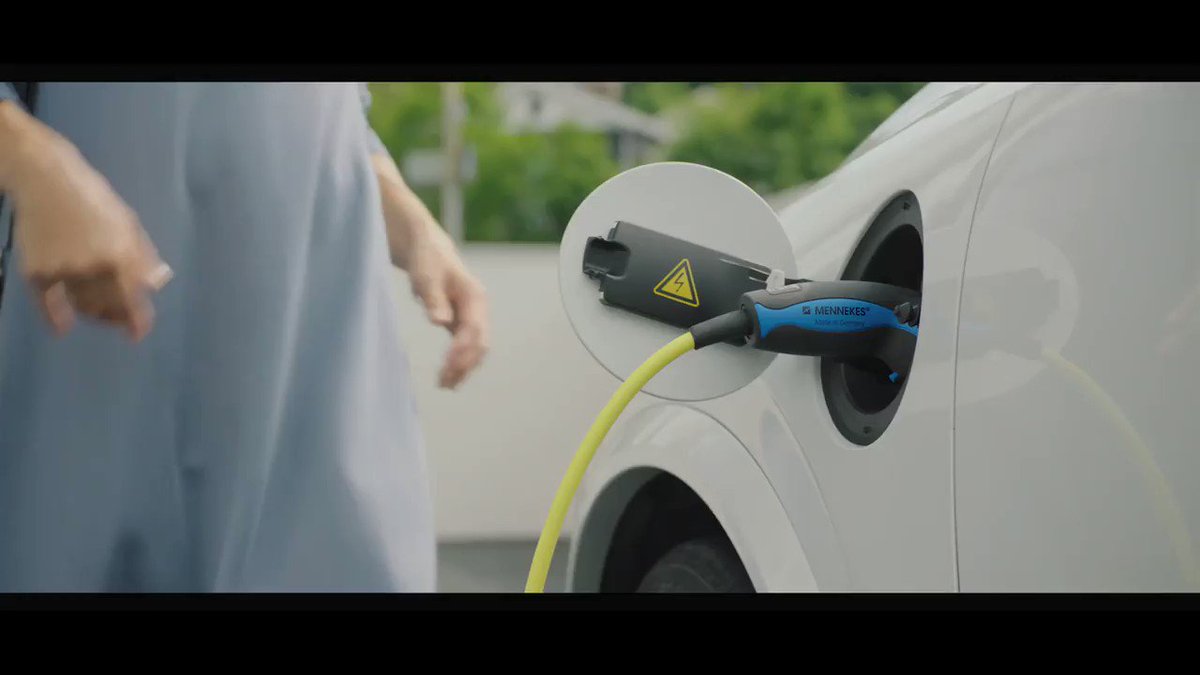/cdn.vox-cdn.com/uploads/chorus_image/image/56659171/model_s_001.0.jpg)
On Saturday, a Chinese official told the audience at an auto forum in Tianjin that the government is working on a timetable to end “production and sales of traditional energy vehicles,” i.e., gasoline and diesel cars, according to accounts from the Xinhua News Agency. Regulators have begun the “relevant research,” and the policy will be implemented “in the near future.”
Details are somewhat sketchy, but it appears the government plans to shift away from the massive research and consumer subsidies of recent years to something like a cap-and-trade program for fuel economy and emissions, with automakers facing rising quotas but tradable credits providing some compliance flexibility.
It’s not a concrete policy yet; we’ll have to see how it’s implemented. But for a moment, look beyond the policy to the optics. This is the world’s largest car market — responsible for around 30 percent of global passenger vehicle sales — announcing an imminent end to fossil fuel cars. That’s a big, big deal.
It is just one of many remarkable developments around EVs recently. The past year has seen trumpet blast after trumpet blast heralding the arrival of an EV revolution — sooner than most analysts expected.
How fast that revolution will unfold is the source of much dispute and uncertainty. And it matters a great deal to oil demand, electricity demand, greenhouse gas emissions, air pollution, and global trade flows.
In many ways, questions around EVs parallel questions around renewable energy. They have both been consistently underestimated. If they continue beating expectations, revolution is nigh. But there’s also a lot of hype, wildly conflicting projections, and plenty of risks and pitfalls ahead.
/cdn.vox-cdn.com/uploads/chorus_asset/file/8038163/electric_cars_charging.jpg)
So let’s take a look at a few recent developments.
National fossil fuel vehicle bans are catching on
China is only the latest country to announce its intention to phase out the production and sale of gas and diesel vehicles altogether.
- Last year, the Dutch parliament voted through a motion to end all gas and diesel car sales by 2025 (it still has to go through the Dutch senate).
- In June, India announced that it would end sales of gas and diesel cars by 2030.
- In June, Norway agreed to end sales of gas and diesel cars by 2025. (Norway leads the world in EVs — almost 40 percent of its newly registered vehicles were hybrid, electric, or hydrogen in 2017.)
- In July, France announced it would end sales of gas and diesel cars by 2040.
- In July, Britain announced it would end sales of gas and diesel cars by 2040.
- In August, German Chancellor Angela Merkel hinted that her country would follow suit. “I cannot name an exact year yet,” she said, “but the approach is right, because if we quickly invest in more charging infrastructure and technology for electric cars, a general changeover will be structurally possible.”
- This month, the Scottish government announced it would phase out gas and diesel cars by 2032.
- Of course, dozens of other countries and states/provinces have their own targets for EVs. (The International Energy Agency’s Global EV Outlook has a good overview.)
Many of these promises are vague or lack implementation plans, and all could be overturned by subsequent governments, but they all carry a clear message. While there are all sorts of clever EV support policies, outright bans carry a unique political and market-moving weight — especially in rapidly expanding markets like China and India.
There’s a big psychological difference between “we’re going to start edging into a transition” and “we’re ending gas cars.” There’s a finality to the latter that, shall we say, stimulates the entrepreneurial imagination.
(Some) automakers are making big promises on EVs
In most big markets outside the US, EVs are the hot thing, so lots of major automakers have announced plans to start shifting in the direction of electrification, through either conventional gas-electric hybrids (HEVs), plug-in gas-electric hybrids (PHEVs), or pure battery electric vehicles (BEVs).
Some pledges are more ambitious than others. And all must be taken with a grain of salt, given that many automakers are not hitting their current EV targets. Here are a few, in chronological order.
- Last year, Volkswagen announced that it would attempt to bring 30 or more BEVs to market by 2025, with a target of 2 million to 3 million sold by that year, roughly 25 percent of its total sales. This year, the company upped the ante again, vowing to create electric versions of all 300 of its models. (After its diesel scandal debacle, Volkswagen is all in on electrics.)
- In March, Daimler (owner of Mercedes-Benz) announced it was accelerating its EV program and would have 10 new EVs to market by 2022.
- In July, Volvo announced that all its models introduced in 2019 and after would be hybrid or electric.
- This month, BMW announced that by 2025 it would have 12 new BEVs and 13 new hybrids on the road.
- This month, Jaguar Land Rover announced that all of its new models from 2020 onward would be hybrid or electric.
- And of course there are big electric car companies like Tesla, which plan to sell 100 percent BEVs now and forever.
In contrast to their European counterparts, the Big Three US automakers — Ford, GM, and Chrysler — have been slackers on EVs. Across all three, today they offer three BEVs and five PHEVs. And in the next three-plus years, they have cumulatively promised one (1) noncommercial EV. (The Renault-Nissan electric alliance, which had an early lead in EV sales, isn’t doing that great either.)
What Ford, GM, and many other automakers have done is go to China to establish partnerships. “The biggest players are shifting crucial scientific and design work to China,” wrote Keith Bradsher in the New York Times, “as the country invests heavily in car-charging stations and research and pushes automakers to embrace battery-powered vehicles.”
China is leading now, and the US is lagging. But we are getting some cool cars.
Three cool new models are coming to the US this year
EVs have typically been criticized for being too expensive and not going far enough on a charge. But with every new model that hits the market, they get cheaper and go farther. Three notable contenders this year (listed prices will be lower after the $7,500 federal EV tax credit and various state-level incentives):
- The Tesla Model 3 sedan began deliveries this year, marking the company’s long-anticipated move into the mass market. There are two models, a standard with 220-mile range ($36,200 base price) and a Long Range version with 310-mile range ($45,200 base price). Full reviews haven’t come in yet, but early encounters are described in rapturous terms.
/cdn.vox-cdn.com/uploads/chorus_asset/file/9240581/gallery_1.jpg)
- The 2010 Nissan Leaf is the world’s best-selling EV, but it has gotten long in the tooth. The 2018 Nissan Leaf is an upgrade, with 150-mile range and a $29,990 base price. The company plans to introduce a higher-powered version next year.
/cdn.vox-cdn.com/uploads/chorus_asset/file/9226237/2018_LEAF_SL_NBL.jpg)
- The Chevy Bolt technically debuted at the very end of last year, but I’m counting it anyway. It boasts a range of 238 miles and a base price of $36,620, which makes it squarely competitive with the Model 3. It got five stars from Car & Driver and won Motor Trend’s 2017 Car of the Year — by all accounts it’s a fantastic car — but it’s received oddly little hype relative to Tesla, and sales have been disappointing.
/cdn.vox-cdn.com/uploads/chorus_asset/file/9226249/2018_chevrolet_bolt_25_cars_worth_waiting_for_feature_car_and_driver_photo_657549_s_original.jpg)
Car-sharing services are on board
- A few days ago, Uber announced its own “Clean Air Plan” for its UK operations. It will attempt to eliminate diesel vehicles and make all its offerings in the country hybrid or electric by 2022, with 100 percent of vehicles in London fully electric by 2025. It’s also starting a fund to help its drivers upgrade their vehicles.
- Uber also launched a program earlier this year to push hundreds of its US drivers in the Portland area to upgrade to EVs. (Similar pilot programs are underway in London, Lisbon, Madrid, Johannesburg, and Paris.)
- Lyft has set itself the goal of providing 1 billion rides in fully electric, fully autonomous vehicles by 2025, and it wants all those vehicles powered entirely by renewable energy.
Whatever you think of these companies, they are appealing to a relatively young, relatively affluent demographic — and they know that demographic wants EVs.
EVs don’t yet amount to much relative to the auto market
EVs are still a tiny fraction of the vehicle market.
- In 2016, the global stock of EVs (meaning PHEVs, EVs, and fuel cell electric passenger light-duty vehicles, or PLDVs) crossed 2 million, which is about 0.2 of the global light-duty passenger vehicle (LDPV) fleet. As you can see, BEVs are now solidly outselling PHEVs, mainly because of China’s burgeoning market:
/cdn.vox-cdn.com/uploads/chorus_asset/file/9235891/iea_gevo2017_stock.jpg)
- BEVs amounted to only 0.5 percent of US car sales in 2016. If you include PHEVs, the total plug-in share is 3.3 percent of 2017 vehicle sales.
- Chinese consumers bought about 289,000 BEVs and PHEVs in 2016; EU consumers around 215,000; US consumers around 150,000. There were 92 million internal combustion engine vehicles sold in the same year.
- Norway has the highest EV market share, at 29 percent of new vehicles, but after that it drops off steeply. The Netherlands is next, at 6.4 percent, and then Sweden, at 3.4 percent. China, France, and the UK are at around 1.5 percent.
The question is what kind of trajectory EVs are on, how fast they will grow from that small base. On that subject, opinions … differ.
Analysts disagree about when EVs will go big
- Exxon Mobil expects plug-in vehicles to amount to just a sliver of vehicle sales by 2040.
/cdn.vox-cdn.com/uploads/chorus_asset/file/9235965/exxxon_2017_enegy_outlook_transpo.jpg)
- The Energy Information Administration (EIA) has a similarly dismal outlook for the US.
/cdn.vox-cdn.com/uploads/chorus_asset/file/9235973/eia_aeo2017_evs.jpg)
- Nonetheless, even the big players are revising their forecasts upward. Bloomberg offers a few examples:
• The International Energy Agency more than doubled its central forecast for EVs, raising its 2030 EV fleet size estimate from to 58 million from 23 million.
• Exxon Mobil boosted its 2040 estimate to about 100 million from 65 million.
• BP anticipates 100 million EVs on the road by 2035, a 40 percent increase in its outlook compared with a year ago.
• Statoil ASA, the Norwegian state oil company, says EVs will account for a 30 percent of new sales by 2030.
/cdn.vox-cdn.com/uploads/chorus_asset/file/9236017/_1x_1.png)
- Wood Mackenzie issued a report this year in which the base case had EVs reaching almost 100 million in sales by 2035 (which, it notes, displaces about 2 million barrels of oil a day).
- Morgan Stanley issued a report this year with a base case that had BEVs taking 51 percent of the global auto market by 2040.
- And the report that made the biggest splash, Bloomberg New Energy Finance’s updated EV outlook for 2017, forecast that 54 percent of new car sales in 2040 will be EVs — a huge jump from the 35 percent it forecast just last year. If that plays out, roughly a third of the global light-duty passenger fleet would be electric by 2040. Here’s a quick visual comparison of BNEF’s forecasts to others:
/cdn.vox-cdn.com/uploads/chorus_asset/file/9236083/EVforecastsataglance1.png)
As you can see, forecasts are all over the place, with BNEF substantially more optimistic than other analysts, mainly because of the plunging price of lithium-ion batteries. In 2010, li-on battery packs were $1,000 per kilowatt-hour. Today they’re under $300. By 2026, BNEF expects them to be under $100, and under $73 by 2030. That’s just through scale and learning, not any particular technological leaps.
I’m testing your patience now, so we’ll conclude with brief mention of a few things that might accelerate or decelerate the EV revolution.
What could speed up the EV revolution
The EV market results from the interplay of several key trends, any one of which could surprise analysts by accelerating.
For example, most forecasts incorporate steady, incremental improvement in batteries, but there’s always the chance that R&D (which is focusing intensely on batteries these days) could bring a step-wise leap in performance, perhaps due to some new battery chemistry with “nano” in the name.
Similarly with policy. Most forecasts incorporate existing policies but are leery of projecting newer, stronger policies. Nonetheless, all the drivers pushing toward more stringent policy (especially local air-quality concerns) are likely to continue, which means policy is likely to tighten faster than most forecasts indicate.
A few other things that might accelerate the EV transition:
- Consumer demand could hit a tipping point where, rather than incremental growth in EV demand, there’s a phase shift and everybody wants one — they become the default.
- Charging infrastructure could be better funded and faster established than expected.
- Competition among major automakers, along with economies of scale, could push EVs down the learning curve faster than expected.
- Automation and car sharing could mean more people express their choice for EVs.
- Elon Musk could get really, really good at building gigafactories.
What could slow down the EV revolution
Of course, things could always go worse for EVs than expected. The incredible progress in batteries could slow or plateau. There might be some kind of economic downturn or public backlash that causes countries to dial back their policies (and EVs are, for the time being, dependent on supportive policy). Consumers might be more resistant to the transition than expected. The world can always disappoint us.
/cdn.vox-cdn.com/uploads/chorus_asset/file/6111593/GettyImages-501657342.jpg)
Some other factors that might slow progress:
- Charging infrastructure could prove more difficult to standardize and expand than expected.
- Automakers could renege on their promises, drag their feet, and create political resistance.
- Batteries could face unforeseen production or materials challenges.
- A high-profile accident or series of tech malfunctions could create PR challenges, slowing public acceptance.
The EV transition is underway
The point of all this is that momentum toward EVs is building rapidly — so rapidly that forecasts are being rendered anachronistic within a year of release. China, France, and the UK have announced they are ending gas and diesel cars, period. That’s crazy!
Imagine, if you will, a global diaspora of ambitious young researchers and entrepreneurs who hear that in their lifetimes, the most common passenger vehicle in the world will effectively become illegal to make — that they will almost certainly see a large-scale transition to electric vehicles.
That means there are riches and renown to be had. (Do people still say “gold in them thar hills”?)
The people and companies that figure out how to make EVs work — drive costs down, get charging in place, soothe consumer fears about range and cybersecurity, develop new features and services — are going to make a metric shit-ton of money in coming decades.
As for me, in this rare case, I’m an optimist. Once it really sinks in that the transition to EVs is underway and inevitable, a lot more people will hop on the bandwagon, through a sense of public service or a desire for riches or some mix of the two.
A lot of brainpower and money are going to be put behind EVs in the next 20 years. Once the transition gets going, I think it’s going to go quick.
[“Source-vox”]





